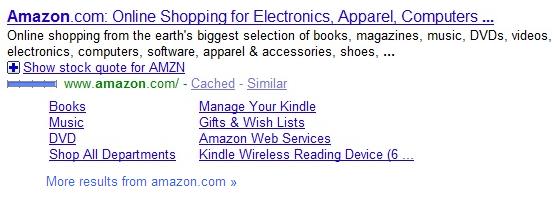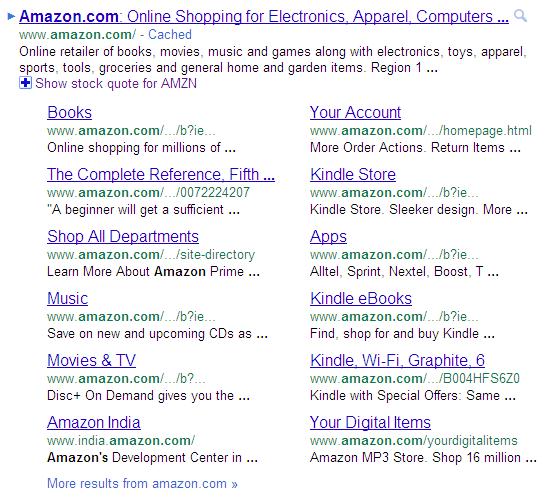Until recently, the sitelinks that you have most commonly seen have probably looked something like this:
The purpose of sitelinks is to help searchers navigate a specific page they are in need of as quickly as possible. However, earlier this week, Google announced its improved and expanded version of sitelinks. The newer version is arranged as a column of links and appears more prominently on the search engine results page.

 The new sitelinks is certainly helping brands dominate the search results page. According to Google, displaying more sitelinks is designed to help users quickly navigate to the most relevant section of a site. But, let’s try and understand how the changes will affect websites, and how they can adapt and take advantage of them.
The new sitelinks is certainly helping brands dominate the search results page. According to Google, displaying more sitelinks is designed to help users quickly navigate to the most relevant section of a site. But, let’s try and understand how the changes will affect websites, and how they can adapt and take advantage of them.
For starters, the new sitelinks takes up a large chunk of the first page results thus ruling out potential competitors and other less relevant sites sneaking above the fold. Online user behavior will change as more users will want to click on the pages listed in sitelinks than look for websites listed below in search results, thus helping brand conversions significantly. Also certain is the tangible increase in organic visits and sales from keywords containing brand permutations.
Adapting to this change is critical and website architecture is really important (directory structure, URL naming conventions etc…); also, make full use of Google’s webmaster console to manage sitelinks and take Google’s humanized results page and ranking factors into consideration.





